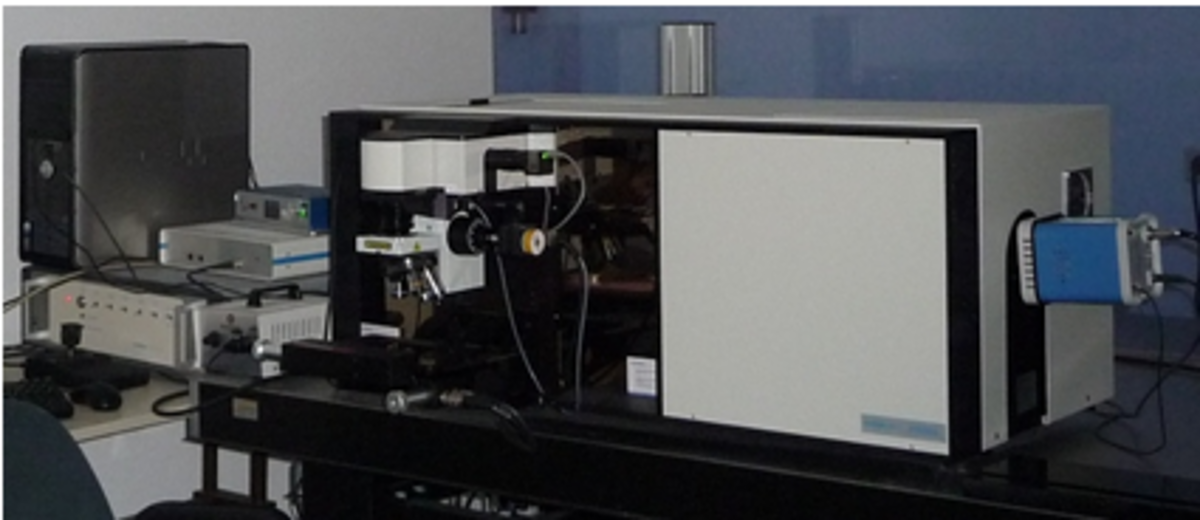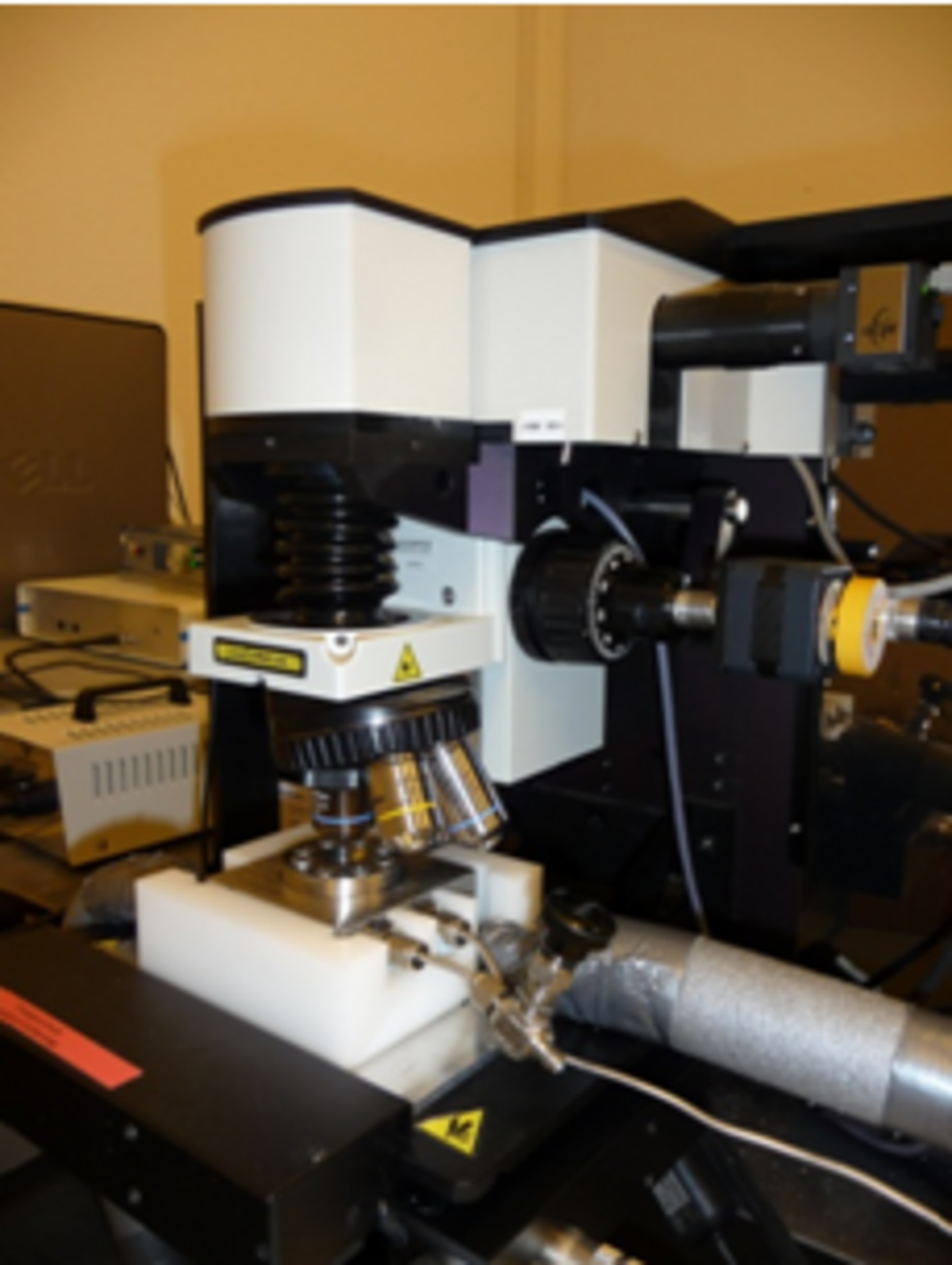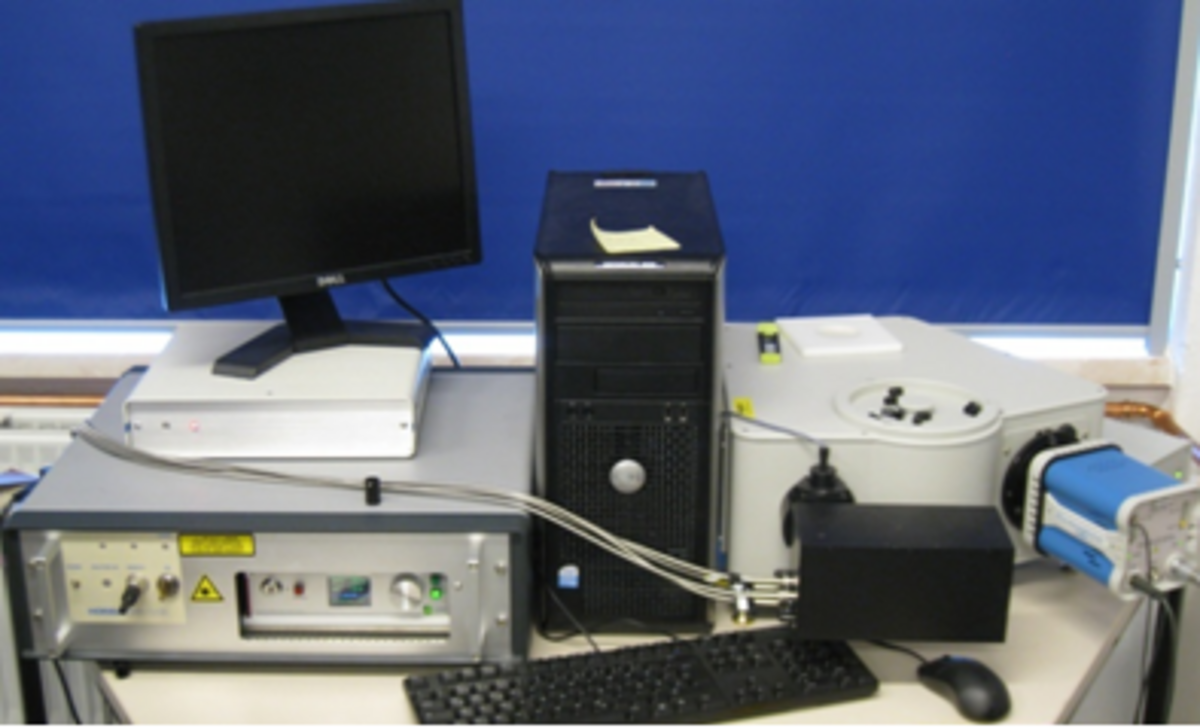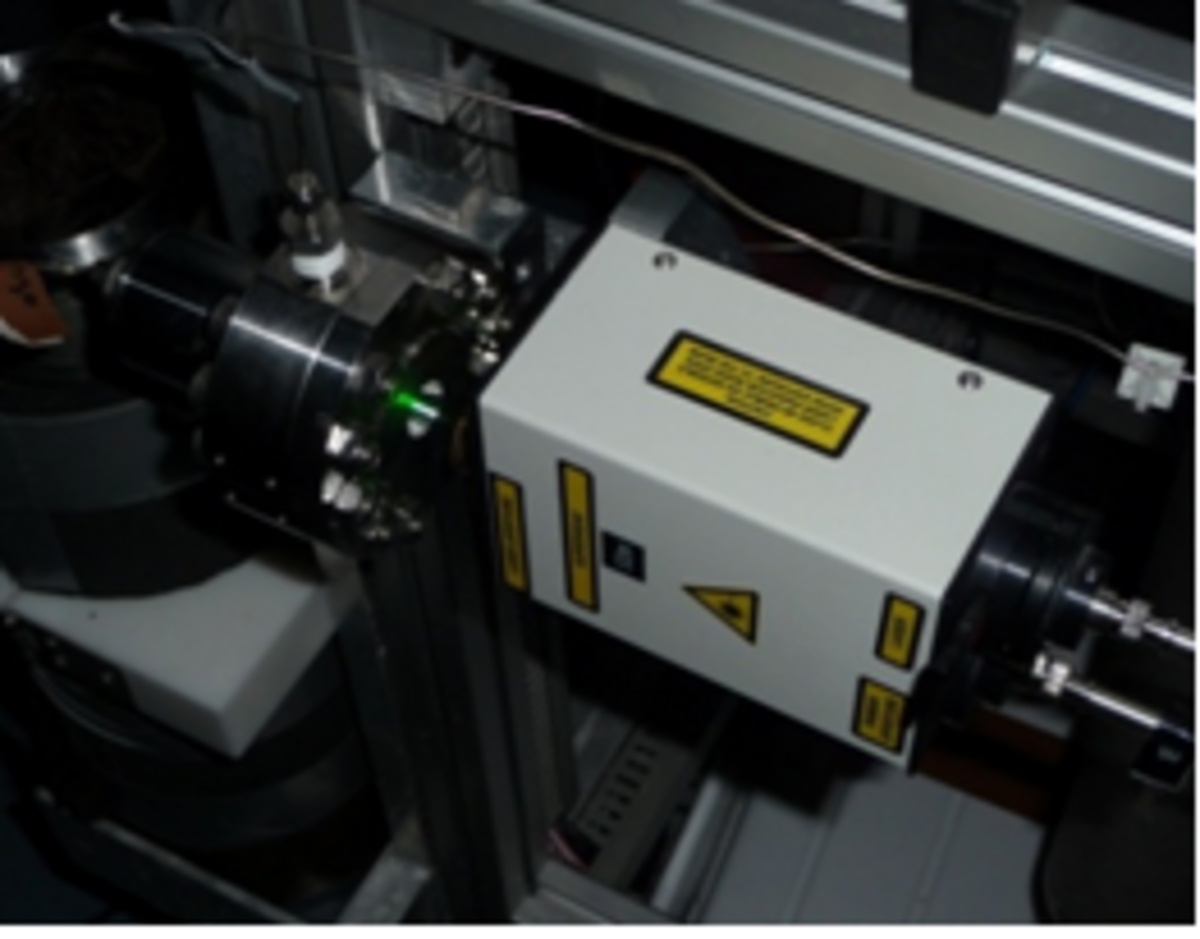Raman spectroscopy is a non-destructive and non-invasive technique to extract chemical and physical information about solid, liquid, gaseous and dissolved compounds. In the Raman experiment a beam of monochromatic light, usually from a laser, is focused onto a sample. Interaction of the light with the electronic environment of the molecules leads to elastic (Rayleigh) and inelastic (Stokes/Anti-Stokes) scattering of the incident photons. The Stokes bands carry the signature of the vibrational modes of the molecules in the excited sample volume, which are used to identify the composition, physical state, and concentration of compounds in the sample.
Equipment
A. Raman microscope LabRAM HR800 from Horiba Jobin Yvon
* Nd-YAG laser (532 nm, 50 mW)
* gratings of 600 and 1800 /mm
* multi-channel CCD detector (1024 x 256 pixel per 26 x 26 µm2)
* high spectral resolution of max. 0.5 cm-1
* focal length of 800 mm
* objectives: 10x, 50x, 100x, 50x (long working distance)
* motorized working table for mapping of samples in XYZ-direction in <1 μm steps
* working table with shock absorption (90% dampening for vibrations >8 Hz)
B. Raman spectrometer iHR SP320-U from Horiba Jobin Yvon
* Nd-YAG laser (532 nm, 500 mW)
* gratings of 600 and 1800 /mm
* multi-channel CCD detector (1024 x 256 pixel per 26 x 26 µm2)
* high spectral resolution of max. 1 cm-1
* focal length of 320 mm
* objectives: macro lens
* Multiplexing for simultaneous measurement at 4 different spots
* 4 SuperHead sensors with fibre optic cables for remote analyses in high-pressure cells
Applications
* Gas hydrates: Identification of the composition and structure of gas hydrates as well as determination of their formation, dissociation, and conversion kinetics. The Raman signals provide precise information about the type of guest molecule amd its cage occupancy. It offers a means to distinguish between the hydrate phase, the gas/liquid phase, and the dissolved phase. It is, therefore, ideally suited to study guest-host interactions, phase transitions and mass transfer between phases as well as spatial heterogeneities of those parameters within the sample. We also attempt to quantify the Raman signal to determine solute concentrations.
* Investigation of natural minerals: microbially-mediated formation of authigenic carbonates, identification of carbonates, sulphates, silicates, and fluid inclusions in rocks






